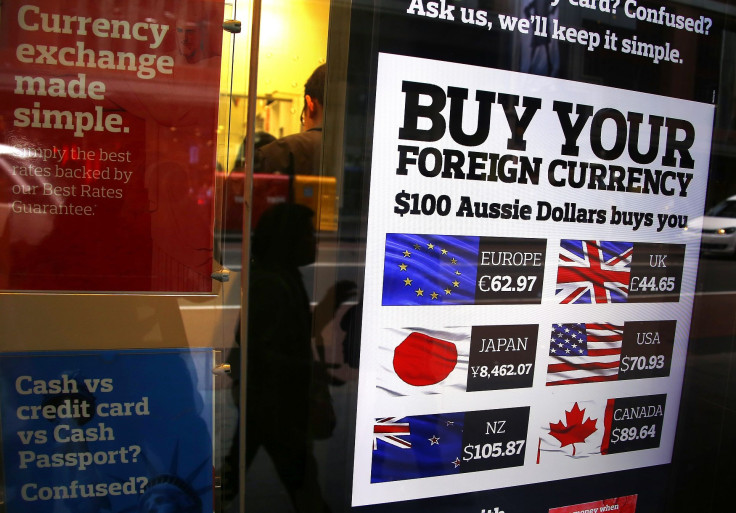Global Market Overview - August 27, 2015

Volatility works both ways
More exaggerated movements in overnight trade. What strikes me as more interesting is what triggered it.
In market conditions like what we’re currently experiencing, it is important to remember that implied volatility is going to move markets a lot harder and faster than normalised trade. The CBOE VIX is at 30.32, even after last night’s rally, showing that wild swings are still very likely and that volatility works both ways.
So what was the trigger?
Hike hysteria
- Since the release of the Fed minutes at 4am AEST on 20 August, the S&P has been in free fall, moving from 2103 to the low of 1833 in five trading days – that’s a 12.8% move.
- In hindsight, the key issue around the minutes is the difference between these two statements:
- ‘Most members judged that the conditions for policy firming had not yet been achieved, but they noted that conditions were approaching that point”.
And:
- ‘Almost all’ members need more ‘evidence’ before feeling ‘reasonably confident’ that inflation would return to the Committee’s longer-run objective.
- This has clearly caused fear around the trajectory of the US economy. On one hand, employment is strong enough to lift rates, yet inflation is stagnate at 0.1%. However, at the time Fed members were saying publicly conditions were ‘gaining momentum’ for the ‘normalisation of policy’. Emerging market growth risk is a factor, but US markets are more likely to move on US data.
- However, hike hysteria was put back in its box after New York Fed President Bill Dudley’s comments, ‘At this moment, the decision to begin the normalization process at the September FOMC meeting seems less compelling to me than it was a few weeks ago…let’s see how the data unfolds before we make any statements about exactly when that might occur.”
Chart of the S&P over the past three weeks
I still see hike hysteria as being a major disruptor to normalised trading conditions. I would expect to see wild trading conditions leading into each FOMC meeting now until the end of the year, or at least until they move on the lift-off scenario.
The other fear: Fear of missing out
- As I mentioned yesterday, there is a very compelling case to buy this market, and I can similarly make a compelling case to sell it. This is due to the EM risks and the fact that Asia is still being sold off.
- If the futures market’s indications do indeed see the ASX adding 1.2% today, then the ASX is on the verge of adding 6.2% since Monday’s intraday low.
- This is a huge inflection point. We see a ‘fear of missing out’ pill in as the banks and domestic industrials ratchet back up, or will the fear cause a market roll over? The fundamentals are completing not denying it, as is volatility.
Ahead of the open, we are calling the ASX up 75 points to 5248. This would suggest fear of missing out may indeed be the winner in the interim.
Asian markets opening call
Price at 8:00am AEDT
Change from the Offical market close
Percentage Change
Australia 200 cash (ASX 200)
5,247.80
75
1.45%
Japan 225 (Nikkei)
18,698.80
322
1.75%
Hong Kong HS 50 cash (Hang Seng)
21,529.10
449
2.13%
China H-shares cash
9,647.00
219
2.32%
Singapore Blue Chip cash (MSCI Singapore)
326.36
6
1.83%
US and Europe Market Calls
Price at 8:00am AEDT
Change Since Australian Market Close
Percentage Change
WALL STREET (cash) (Dow)
16,292.00
339
2.08%
US 500 (cash) (S&P)
1,943.65
42
2.13%
UK FTSE (cash)
6,080.80
66
1.01%
German DAX (cash)
10,208.10
224
2.24%
Futures Markets
Price at 8:00am AEDT
Change Since Australian Market Close
Percentage Change
Dow Jones Futures (September)
16,263.50
343.00
2.15%
S&P Futures (September)
1,939.63
42.00
2.21%
ASX SPI Futures (September)
5,208.50
65.00
1.26%
NKY 225 Futures (September)
18,770.00
265.00
1.43%
Key inputs for the upcoming Australian trading session (Change are from 16:00 AEDT )
Price at 8:00am AEDT
Change Since Australian Market Close
Percentage Change
AUD/USD
$0.7124
-0.0006
-0.09%
USD/JPY
¥119.990
0.255
0.21%
Rio Tinto Plc (London)
£22.48
0.03
0.13%
BHP Billiton Plc (London)
£10.25
0.04
0.39%
BHP Billiton Ltd. ADR (US) (AUD)
$23.92
-0.02
-0.08%
Gold (spot)
$1,125.55
-10.15
-0.89%
Brent Crude (October)
$43.64
0.10
0.22%
Aluminium (London)
1532
-24.00
-1.54%
Copper (London)
4920
-136.00
-2.69%
Nickel (London)
9535
-30.00
-0.31%
Zinc (London)
1682
-56.00
-3.22%
Iron Ore (62%Fe Qingdao)
$53.67
0.39
0.73%
IG provides round-the-clock CFD trading on currencies, indices and commodities. The levels quoted in this email are the latest tradeable price for each market. The net change for each market is referenced from the corresponding tradeable level at yesterday’s close of the ASX. These levels are specifically tailored for the Australian trader and take into account the 24hr nature of global markets.
Please contact IG if you require market commentary or the latest dealing price.
EVAN LUCAS Market Strategist
[Kick off your trading day with our newsletter]
More from IBT Markets:
Follow us on Facebook
Follow us on Twitter
Subscribe to get this delivered to your inbox daily






